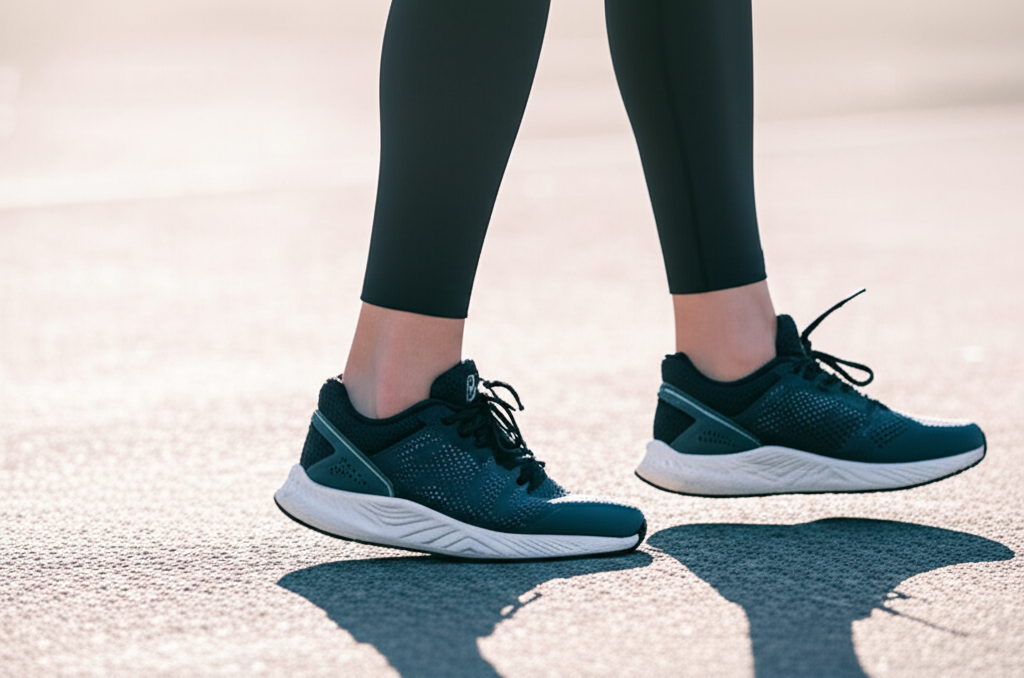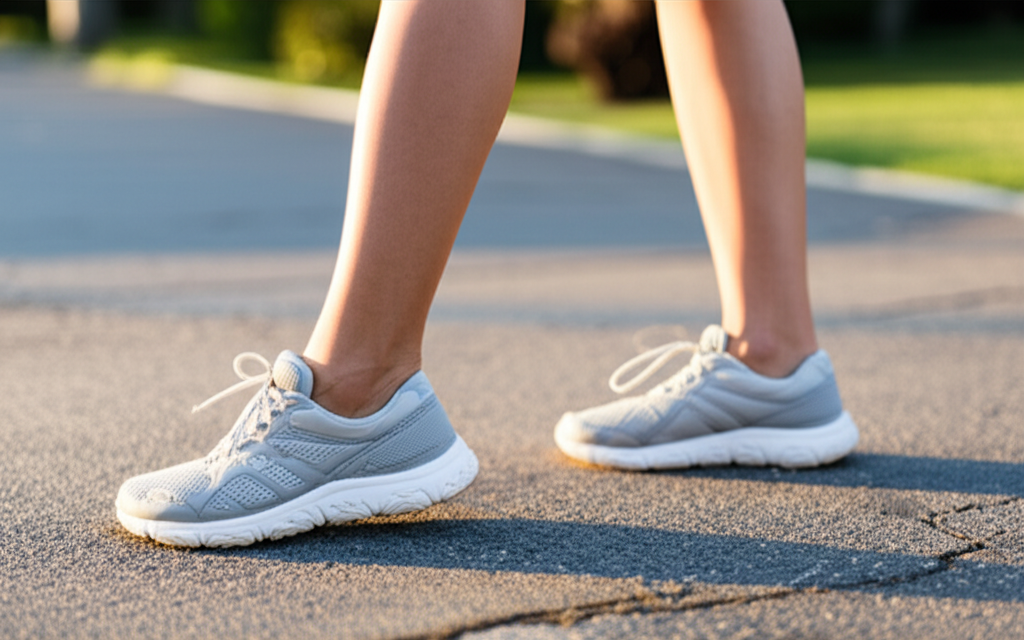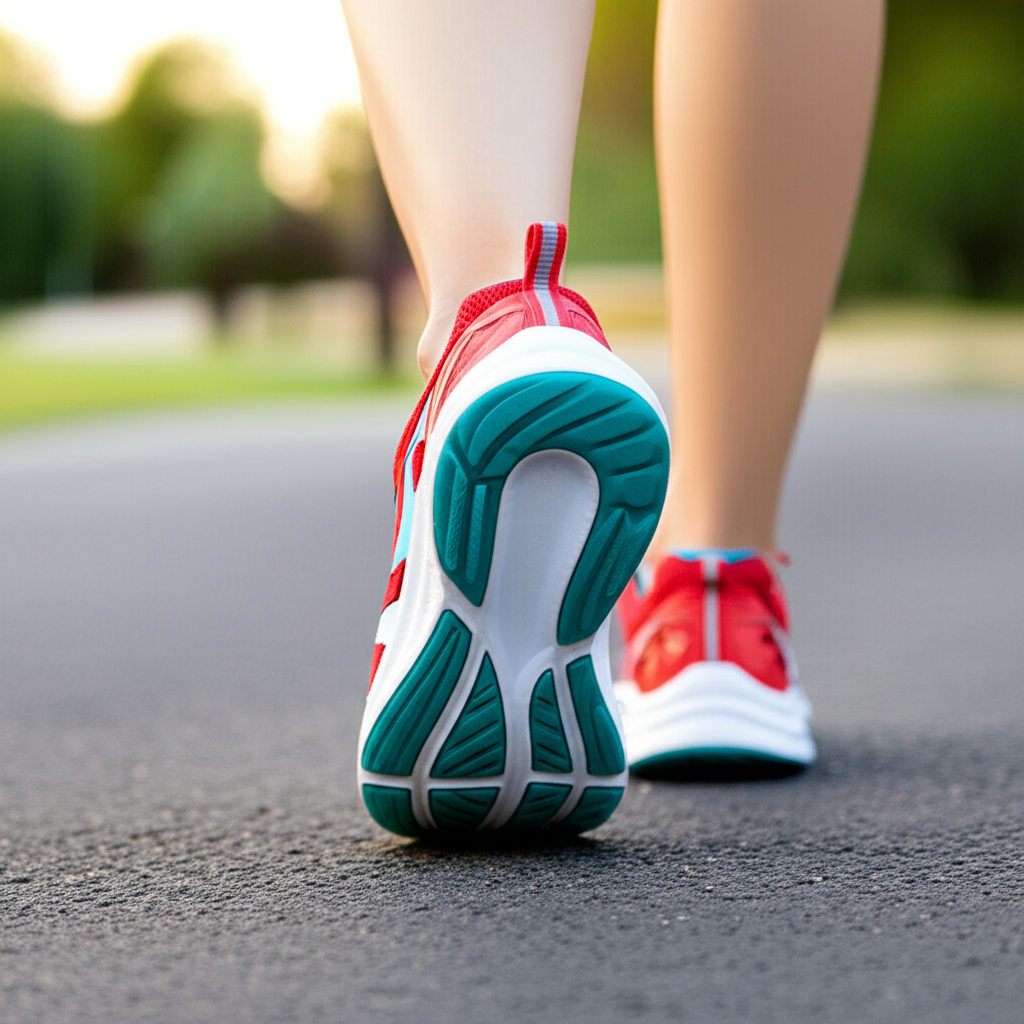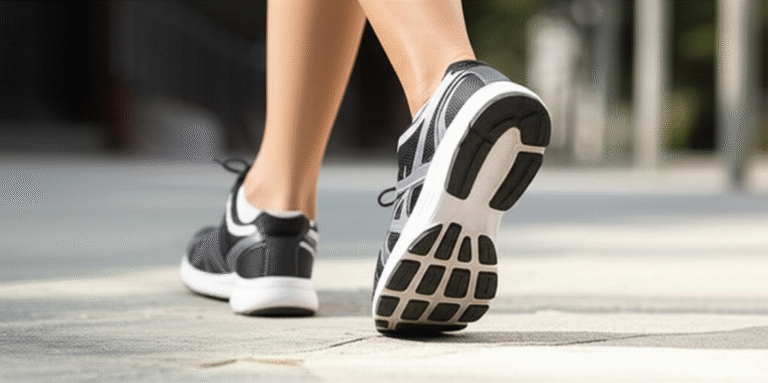Yes, the wrong walking shoes can absolutely cause or worsen knee pain. The startling truth is that your footwear plays a significant role in how your knees feel, especially during and after walking. Understanding the connection is key to finding relief.
Key Takeaways
- Choose shoes with proper support.
- Ensure a comfortable and snug fit.
- Replace worn-out walking shoes promptly.
- Consider your foot type for better alignment.
- Listen to your body and seek advice.
Can Walking Shoes Cause Knee Pain? The Startling Truth
It might surprise you, but your favorite pair of walking shoes could be the hidden culprit behind your aching knees. Many people assume that walking is always a gentle activity for your joints. However, when your footwear doesn’t offer the right support or fit, it can put undue stress on your knees. This can lead to discomfort, pain, and even long-term issues. You might be confused about why your knees hurt after a walk, especially if you’re using shoes you thought were perfectly fine. Don’t worry; we’re here to break down the connection between your shoes and your knee health. Let’s explore how the right (or wrong!) walking shoes can impact your knees, and what you can do to find comfort and prevent pain.
Understanding the Biomechanics of Walking and Knee Pain

Walking might seem simple, but it involves a complex series of movements and forces acting on your body, especially your lower limbs. Your feet act as the foundation for your entire body. When you walk, the shock from each step is absorbed and distributed through your feet, ankles, and up through your legs to your knees. If your shoes aren’t designed to manage this shock and support your foot’s natural motion, your knees can bear the brunt of the impact. This is where the link between footwear and knee pain becomes clear.
Your knees are hinge joints, designed primarily for bending and straightening. They are not built to handle excessive twisting or excessive impact without proper cushioning and stability. When you walk, your feet pronate (roll inward) and supinate (roll outward) naturally to absorb shock and adapt to the ground. If your shoes interfere with this natural motion, or lack the necessary support, it can cause misalignment. This misalignment can put abnormal pressure on the knee joint, leading to pain, inflammation, and even structural damage over time.
Consider the forces involved. With each step, your knee absorbs forces up to 1.5 times your body weight when walking. If you’re running, this can increase to 2.5 times your body weight. The right walking shoes are engineered to mitigate these forces, providing cushioning and stability to protect your joints. When they fail to do so, your knees are left vulnerable.
How the Wrong Walking Shoes Lead to Knee Pain
Several factors related to your walking shoes can contribute to knee pain. It’s not just about the brand or how new they look; it’s about their construction, fit, and suitability for your walking style and foot mechanics.
1. Lack of Proper Cushioning
Cushioning in walking shoes is crucial for absorbing impact. Think of it like shock absorbers in a car. When you walk, your feet hit the ground with force. Good cushioning disperses this force, preventing it from traveling directly up to your knees. If your shoes are worn out or simply lack adequate cushioning, each step sends a jolt through your skeletal system. Over time, this repetitive impact can irritate the cartilage in your knee, leading to pain, particularly in the kneecap (patellofemoral pain syndrome).
Worn-out shoes are a common culprit. The materials that provide cushioning, like EVA foam or gel inserts, compress and degrade over time. A study published in the Journal of Orthopaedic & Sports Physical Therapy highlighted the importance of shoe wear on biomechanics, suggesting that worn shoes can alter gait patterns and increase stress on joints.
2. Insufficient Arch Support
Your foot’s arch plays a vital role in shock absorption and distributing weight evenly. Different people have different arch types: high arches, normal arches, and flat feet. Each type requires different levels of support from a shoe.
- Flat Feet (Overpronation): If you have flat feet, your arches collapse inward more than usual when you walk. This can cause your feet to roll inward excessively (overpronation), which in turn can cause your knees to rotate inward. This misalignment puts stress on the inside of your knee and the kneecap, often resulting in pain. Shoes with good arch support and stability control can help correct this.
- High Arches (Supination): If you have high arches, your feet may not roll inward enough (supination). This means your feet land on the outside edge, and shock absorption is reduced. This can lead to stress on the outer part of your knee and ankle. Shoes with ample cushioning and flexibility are usually recommended for supinators.
- Normal Arches: Most people have normal arches and a balanced pronation pattern. They typically benefit from shoes that offer a good balance of cushioning and support.
Wearing shoes that don’t match your arch type can disrupt your natural gait and lead to knee pain. For example, someone with flat feet wearing a minimalist shoe with no arch support might experience knee pain due to excessive inward rolling.
3. Poor Fit and Sizing
An ill-fitting shoe can be just as detrimental as a shoe with poor construction. Here’s how:
- Too Tight: Shoes that are too tight can restrict blood flow and put unnatural pressure on your feet and ankles. This can alter your gait, causing you to compensate in ways that stress your knees.
- Too Loose: Shoes that are too loose force your foot to work harder to stay in place. You might grip with your toes or alter your stride, both of which can lead to imbalances and pain that travels up to your knees.
- Wrong Shape: The shape of the shoe needs to match the shape of your foot. If the toe box is too narrow, it can cause foot deformities and affect how you distribute weight. If the heel counter is too loose, your heel can slip, leading to instability.
A proper fit ensures your foot is secure and moves naturally within the shoe, allowing for proper shock absorption and alignment.
4. Lack of Stability and Motion Control
Some walking shoes are designed with specific stability features to control excessive foot motion. For individuals who overpronate or have unstable ankles, a lack of stability in their shoes can exacerbate knee pain. Stability shoes often feature denser foam on the medial (inner) side of the midsole to resist the inward rolling of the foot. Motion control shoes offer even more robust support for severe overpronation.
Without these features, the foot and ankle may not be adequately supported, leading to abnormal forces being transmitted to the knee joint. This is particularly true on uneven surfaces or during long walks where fatigue can lead to a breakdown in form.
5. Inappropriate Shoe Type for Activity
While this article focuses on walking shoes, it’s important to note that using shoes designed for other activities for walking can also be problematic. For instance:
- Running Shoes: Often designed for forward motion and high impact, they might offer too much cushioning or not enough lateral support for the varied movements of walking.
- Fashion Sneakers: These prioritize style over function. They usually lack adequate cushioning, arch support, and stability, making them unsuitable for extended walking.
- Barefoot or Minimalist Shoes: While beneficial for some, these shoes offer very little protection from impact and require a gradual adaptation period. If you’re not used to them, they can overload your joints, including your knees.
Walking shoes are specifically engineered to provide the right balance of cushioning, support, and flexibility for the biomechanics of walking.
Identifying the Best Walking Shoes for Knee Pain Relief

Now that we understand how the wrong shoes can cause pain, let’s focus on what makes a walking shoe beneficial for your knees. The goal is to find shoes that promote proper alignment, absorb shock, and provide comfort for your specific foot type and walking needs.
Key Features to Look For:
When shopping for walking shoes, pay attention to these essential features:
- Excellent Cushioning: Look for shoes with ample cushioning in the heel and forefoot. Materials like EVA foam, polyurethane, and gel inserts are common. This is your first line of defense against impact shock.
- Arch Support: The shoe should provide adequate support for your specific arch type. If you have flat feet, look for shoes with good stability or motion control features. If you have high arches, prioritize flexibility and cushioning.
- Proper Fit: This is non-negotiable. Ensure there’s about a thumb’s width of space between your longest toe and the end of the shoe. The shoe should feel snug but not tight around the midfoot and heel, with no slipping.
- Flexibility: The shoe should bend naturally at the ball of your foot, where your foot bends when you walk. It shouldn’t be too stiff or bend in the middle of the arch.
- Stable Heel Counter: The back of the shoe (heel counter) should be firm and hold your heel securely to prevent excessive side-to-side movement.
- Breathable Upper: A breathable upper material (like mesh) helps keep your feet cool and comfortable, reducing the risk of blisters and discomfort that can alter your gait.
Understanding Different Types of Walking Shoes
The market offers various types of walking shoes, each designed with specific needs in mind:
| Shoe Type | Best For | Key Features | Potential Knee Pain Link |
|---|---|---|---|
| Cushioned Walking Shoes | Neutral pronators, those seeking maximum shock absorption. | Plush midsoles, good flexibility, soft uppers. | May lack support for overpronators. |
| Stability Walking Shoes | Mild to moderate overpronators, those needing extra arch support. | Medial post (denser foam on inner side), structured midsole, good cushioning. | Can feel too rigid for neutral runners; poor fit can cause issues. |
| Motion Control Walking Shoes | Severe overpronators, heavier walkers, those needing maximum stability. | Very firm midsoles, wider base, strong support features. | Can be overly stiff and restrictive for those who don’t need it. |
| Trail Walking Shoes | Walking on uneven terrain, trails, or in wet conditions. | Durable outsoles with deep lugs, water resistance, enhanced stability. | Can be heavier and less flexible than road walking shoes. |
It’s important to identify your foot type and walking style to choose the right category.
How to Determine Your Foot Type and Gait
Understanding your foot’s natural mechanics is crucial for selecting the right shoes. Here are a few simple ways to get an idea:
The Wet Test
This is a classic method to assess your arch type:
- Wet the bottom of your feet.
- Step onto a piece of paper (like a brown paper bag or a sturdy cardboard).
- Step off and examine the footprint you left behind.
- Normal Arch: You’ll see about half of your arch filled in. This indicates a balanced foot with normal pronation.
- Flat Foot: The entire sole of your foot will be visible, indicating a collapsed arch and likely overpronation.
- High Arch: You’ll see mostly your heel and the ball of your foot, with very little or no connection in the middle. This suggests a rigid foot and likely supination.
Observing Your Old Shoes
Look at the wear patterns on your old walking shoes:
- Even Wear: The sole wears down relatively evenly across the heel and forefoot. This is common for neutral pronators.
- Excessive Wear on the Inner Edge: If the inner edge of the heel and the ball of the foot are heavily worn, you likely overpronate.
- Excessive Wear on the Outer Edge: If the outer edge of the heel and the forefoot show the most wear, you likely supinate.
Professional Gait Analysis
For the most accurate assessment, visit a specialty running or walking store. They often have trained staff who can observe you walking or running on a treadmill and analyze your gait, recommending shoes tailored to your needs. Some physical therapists or podiatrists also offer this service.
According to the Johns Hopkins Medicine, proper biomechanics and alignment are key to preventing and managing knee osteoarthritis, and footwear plays a significant role in this.
Pro Tips for Buying Walking Shoes to Prevent Knee Pain

Pro Tip: Always try on shoes later in the day when your feet are slightly swollen. This ensures a comfortable fit even after hours of walking and prevents buying shoes that will become too tight as the day progresses.
When to Replace Your Walking Shoes
Even the best walking shoes don’t last forever. The materials that provide cushioning and support degrade with use. Knowing when to replace them is crucial to preventing knee pain.
As a general rule:
- Mileage: Most walking shoes are designed to last between 300 to 500 miles of walking. If you walk regularly, keep track of your mileage.
- Time: Even if you don’t walk many miles, the cushioning and structural integrity of the shoe can break down over time due to exposure to air and moisture. Aim to replace them every 12-18 months if you walk regularly.
- Visible Wear: Look for signs like compressed midsoles (the shoe looks flat), worn-out tread, creasing in the midsole that doesn’t spring back, or signs of the shoe losing its shape.
- Feel: If your shoes feel less supportive, less cushioned, or if you start to notice new aches and pains in your feet, ankles, or knees, it’s a strong indicator they need replacing.
Don’t wait until your shoes are falling apart. Worn-out shoes significantly increase the risk of injury and pain because they can no longer provide adequate shock absorption and support.
Other Factors Contributing to Knee Pain While Walking
While footwear is a major player, it’s not the only factor. Other elements can contribute to knee pain during walks:
- Walking Surface: Constantly walking on hard, unyielding surfaces like concrete can increase impact forces. Softer surfaces like trails or asphalt can be more forgiving.
- Walking Technique: Poor posture, overstriding, or a stiff gait can put extra stress on your knees.
- Weight: Excess body weight significantly increases the load on your knee joints.
- Muscle Strength and Flexibility: Weak quadriceps, hamstrings, glutes, and hip muscles, or tight muscles, can lead to poor biomechanics and knee pain.
- Pre-existing Conditions: Arthritis, previous injuries, or structural issues in the knee can make you more susceptible to pain.
It’s important to consider these factors in conjunction with your footwear choices for a holistic approach to knee health.
When to Seek Professional Help
If you’ve tried different shoes, ensured a proper fit, and still experience persistent knee pain while walking, it’s time to consult a professional. This could be:
- Your Doctor: To rule out underlying medical conditions.
- A Podiatrist: A foot and ankle specialist who can diagnose foot-related issues and recommend specific footwear or orthotics.
- A Physical Therapist: They can assess your gait, muscle strength, and flexibility to identify biomechanical issues and provide a personalized exercise program.
These professionals can provide expert advice and treatment plans to address the root cause of your knee pain.
Frequently Asked Questions (FAQ)
Q1: Can wearing running shoes for walking cause knee pain?
Yes, it’s possible. Running shoes are designed for forward motion and high impact, with different cushioning and support structures than walking shoes. Using them for walking might not provide the optimal support or flexibility needed for your gait, potentially leading to knee discomfort.
Q2: How long should walking shoes last?
Most walking shoes are designed to last between 300 to 500 miles. If you walk about 3 miles per day, this is roughly 100-170 days, or 3-6 months of regular use. Visible wear and loss of cushioning are also indicators.
Q3: Are expensive walking shoes always better for knee pain?
Not necessarily. While premium shoes often use advanced materials, the most important factor is how well a shoe fits your foot type and provides the necessary support and cushioning for you. A moderately priced shoe that’s a perfect match is better than an expensive one that isn’t.
Q4: Can orthotics help if my walking shoes are causing knee pain?
Yes, custom or over-the-counter orthotics can be very helpful. They can provide additional arch support, correct biomechanical issues like overpronation, and improve alignment, which can significantly reduce stress on your knees. However, it’s best to consult a podiatrist or physical therapist before using them.
Q5: I have flat feet and my knees hurt when I walk. What kind of shoes should I look for?
For flat feet, you generally need shoes that offer good arch support and stability to control overpronation. Look for “stability” or “motion control” walking shoes. These often have a firmer midsole on the inside to prevent your foot from rolling inward too much, which can alleviate knee stress.
Q6: Is it okay to walk barefoot to avoid shoe-related knee pain?
Walking barefoot can be beneficial for some people, strengthening foot muscles and improving proprioception. However, it significantly reduces shock absorption. If you’re not accustomed to it or walk on hard surfaces, it can actually increase stress on your knees. It’s usually best to start with well-cushioned shoes and gradually incorporate barefoot walking on safe surfaces if desired.
Q7: My knees hurt after walking on treadmills. Is it my shoes?
It could be. Treadmills often have a forgiving surface, but if your shoes lack adequate cushioning or support, the repetitive motion can still lead to knee pain. Ensure your walking shoes are suitable for treadmill use, offering good shock absorption and a proper fit. Also, consider the treadmill’s cushioning settings if adjustable.
Conclusion
The connection between your walking shoes and knee pain is undeniable. The startling truth is that the footwear you choose has a profound impact on how your knees absorb shock, maintain alignment, and ultimately, how comfortable you feel. By understanding the role of cushioning, arch support, fit, and stability, you can make informed decisions that protect your knees.
Don’t let the wrong shoes be the silent source of your discomfort. Take the time to assess your foot type, consider the features of different walking shoes, and invest in a pair that truly supports your body. When your shoes work with your body, not against it, you can enjoy your walks pain-free and maintain your active lifestyle. If pain persists, remember to seek guidance from healthcare professionals. Your knees will thank you for it.

